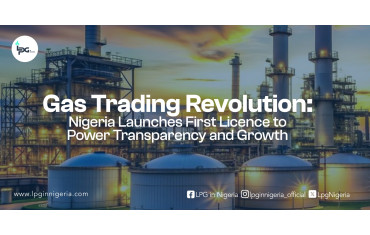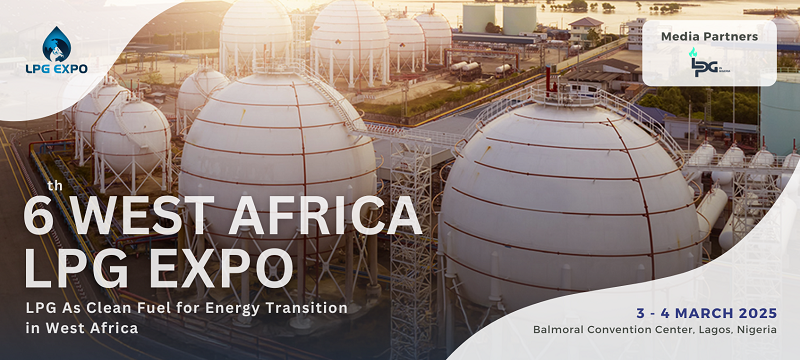- 3436
- 0
Sharing Ideas and Updates on LPG in Nigeria and related information to enable effective collaboration within the LPG Value Chain
CAN NIGERIA BE A PART OF THE IEF $4.9 TRILLION OIL & GAS INVESTMENT BY 2030?

Earlier this week, The International Energy Forum (IEF) reported that up to $4.9 trillion worth of global upstream oil and gas investments will be needed by 2030 to ensure sustained supplies and prevent an energy crisis in the coming years. The International Energy Forum and S & P Global Commodity Insights had earlier reported the inevitability of an energy crisis in the future if measures were not taken to avoid it.
This massive investment will be needed to meet market needs and prevent a supply shortfall, even if demand growth slows towards a plateau. The IEF said that global oil and gas upstream capital expenditure increased by 39% in 2022 to $499 billion, the highest level since 2014 and the largest year-on-year gain in history. Stating that higher costs primarily drive the increase in investment, but activity has also started to recover. The global rig count is up 22% from a year ago but remains 10% below 2019 levels.
The report claimed annual upstream spending “will need to increase from $499 billion in 2022 to $640 billion in 2030 to ensure adequate supplies”. It also reported that this estimate for 2030 is 18% higher than was assessed a year ago, primarily because of rising costs. Finally, it was cited that underinvestment in the oil and gas sector threatens to undermine energy security in the short and medium term globally.
What is the Implication for the Nigerian Oil and Gas Sector?
Many countries and nations of the world are expanding their oil and gas production capabilities. An example is the Middle East state-owned giants like Abu Dhabi National Oil Company (ADNOC), Saudi Aramco and QatarEnergy. However, several leading Nigerian energy companies have yet to commit to similar upstream investments and capacity enhancement projects by the end of this decade. While there are lofty ambitions for oil and gas production in Nigeria, such as the ‘Decade of Gas’, ‘Energy Transition Plan’ and Refineries Rehabilitation across Nigeria, nothing of substance has been achieved.
Nigerian National Petroleum Corp. (NNPC) head Mele Kyari, speaking at Adipec on the 2nd of November, 2022, stated that the country intended to reach 2.2mn bpd in 2023. According to him, Nigeria would reach 3mn bpd within two to three years, and then 4mn bpd in five years. However, in the same year 2022, Nigeria’s production fell below 1mn bpd this year, largely due to insecurity, sabotage, oil theft and gas pipe destruction in the Niger Delta and related environment. The aim, according to him, was that as production moved up, Nigeria would seek to raise its baseline at OPEC, allowing it to increase output while conforming to new quotas.
The NNPC head further enunciated that NLNG shareholders were keen to add more capacity, with Train 8. Explaining that there is so much gas reserve in Nigeria and endless possibilities with gas as a resource. He also explained that there were plans for various floating LNG/LPG projects. The Nigerian government, with NNPC, has set out plans to build an offshore pipeline round to Morocco, in addition to an onshore link through the Sahara to Algeria. Nigeria has the resources, Kyari said, but there is an issue with how to access financing for such projects.
One major investment underway is the Dangote Group refinery. After some delays, this is due to start up in 2023. Starting up this facility, and restoring production from Nigeria’s dysfunctional four refineries, could transform the country into a net exporter.
However, these lofty “dreams” and aspirations are mostly on hold as the country’s LPG sector still stands in a balance between growing domestic demand and a lucrative export market. These challenges remain to be addressed to meet current needs and address suppressed demand, including gas availability, scattered demand centres, an uncertain macroeconomic outlook, and a persistent scarcity of foreign exchange.
Most of Nigeria’s gas output relies on associated gas, a by-product of oil production. Unfortunately, the country is currently faced with severe levels of crude theft that have sent its oil production to historic lows, thereby negatively impacting gas availability. Such instability has repercussions across its value chain: in 2022, Nigeria LNG notably revealed that it was producing at only 68% capacity due to the theft of crude oil and vandalism of pipelines, among other problems.
On top of that, Nigeria faces an unstable macroeconomic outlook with historic inflation, scarcity of foreign exchange, and a deepening budget deficit on the back of gasoline subsidies. On the ground, Nigerian industries seeking to switch to gas often cannot procure the equipment or conversion kits they need because they cannot access dollars.
Gas infrastructure also remains inadequate, although the public and private sectors are making efforts to expand it. NNPC is currently building a 614km gas pipeline linking gas fields in the Niger Delta to industrial and manufacturing centres in its Northern states. The private sector is also investing in additional piped natural gas (PNG) networks and compressed natural gas (CNG) facilities. “For Nigeria’s ‘Decade of Gas’ to be successful, we must ambition to bring gas to all state capitals by 2030,” recently declared Eberechuku Oji, CEO of ND Western, one of Nigeria’s leading gas producers.
Amidst current market conditions, a noticeable trend is the multiplication of small-scale gas projects that are adopting a modular and flexible approach to gas infrastructure. Across the CNG, LNG, and LPG sectors, Nigerian developers are going for smaller and cheaper projects that can capture flared gas and turn it into valuable commodities for the domestic market. Business models rely on ventures that can get off the ground in 12-18 months and supply the market by trucks to unlock suppressed demand before eventually scaling up operations.
While Nigeria does have the gas reserves to support mega export projects, equal value can be created by focusing on such domestic and small projects that increase gas penetration, one molecule at a time. Only sustained focus on supporting such efforts can truly help in increasing gas penetration, developing cost-effective infrastructure, addressing energy needs within transport and industry, and ultimately driving industrialisation.
What is the future of Nigeria’s gas export industry?
Meanwhile, efforts are being put into growing the country’s export industry with multi-billion dollars pipelines and new LNG export terminals. But if increasing export capacity can bring much-needed dollar revenues, it should be carefully aligned with the dynamics of the market.
On paper, Nigeria looks well-placed to be an alternative gas supplier to Europe. However, proven gas reserves and proximity to Europe will not in themselves justify investing billions of dollars into new export projects in the country. As Nigeria seeks to grow its global market share in the export market, it competes with several other jurisdictions, and it will not be a default investment destination. Its success in attracting investments will depend on the development of an enabling environment and on future-proofing its projects.
Investments into LNG supply between 2022 and 2030 will be focused on low-cost and flexible projects with a reduced carbon footprint and a quick time to market. In that context, obtaining finance to develop Nigerian gas resources is likely to be challenging. Unfortunately, Nigeria has a reputation for both cost overruns and delays in project execution. In a world where the speed of execution of new projects has become a determinant factor in investment decisions, Nigeria needs to do better.
The type of projects the country proposes will also play a decisive factor in its ability to attract financing. While Europe will seek to replace Russian gas supplies in the short term, its demand for natural gas has already stagnated and is expected to decline dramatically by 2040. The bulk of long-term demand volume growth is likely to continue to be in Asia, as recently confirmed by the Shell LNG Outlook 2022.
This has implications for pipeline projects such as the Trans-Saharan Gas Pipeline (TSGP) and the Nigeria-Morocco Gas Pipeline (NMGP) which remain grounded on the assumptions that there will be enough demand growth for gas in Europe to offtake their gas once they are commissioned. Without questioning the benefits that such projects would have for Nigeria, current market conditions call for a diversification of the country’s offering with alternative options that would favour time-to-market, flexible supply destinations, and domestic monetisation.
SOURCE:
Image: The Guardian News.















0 Comment.